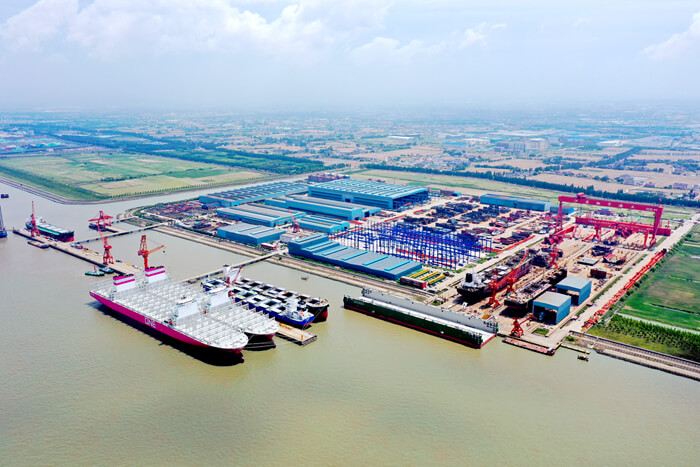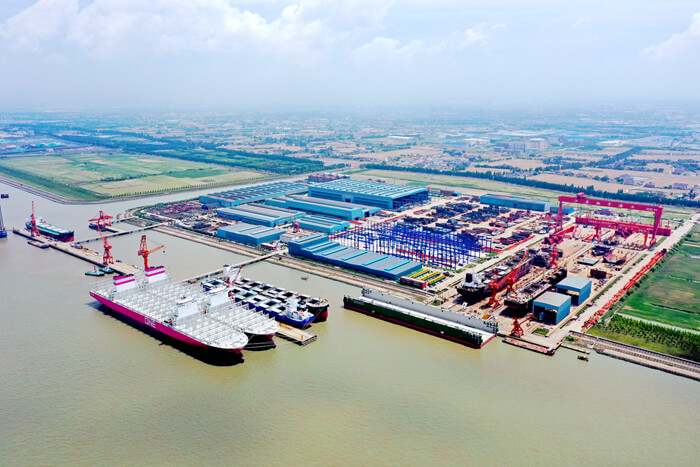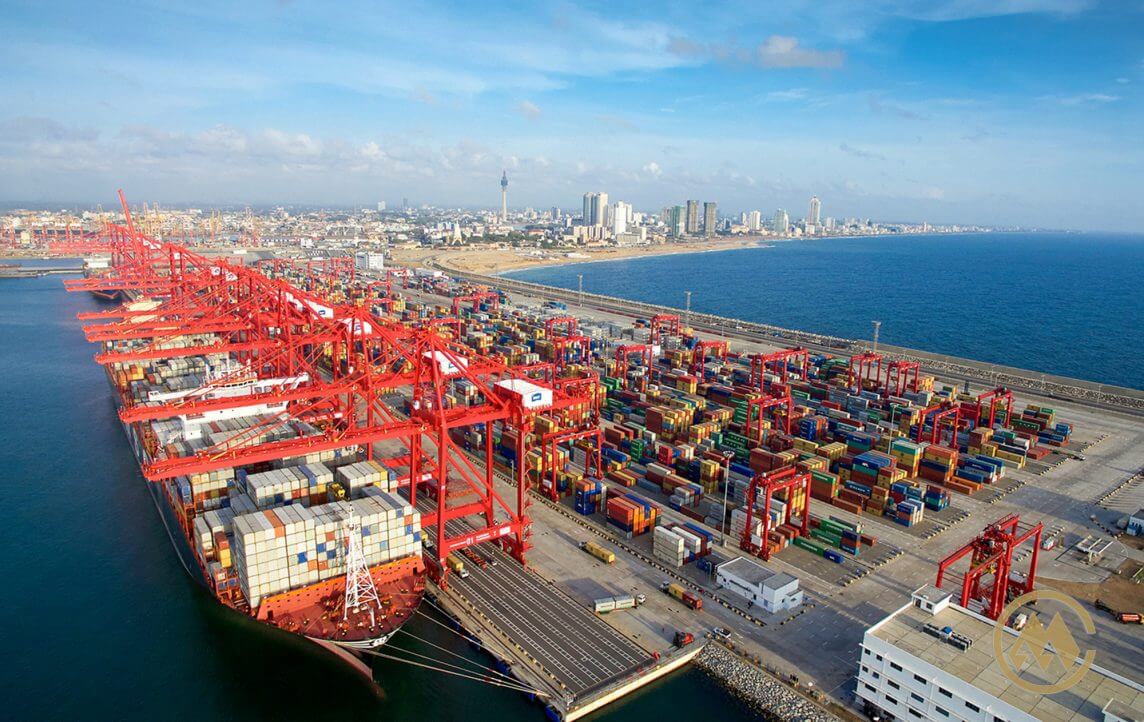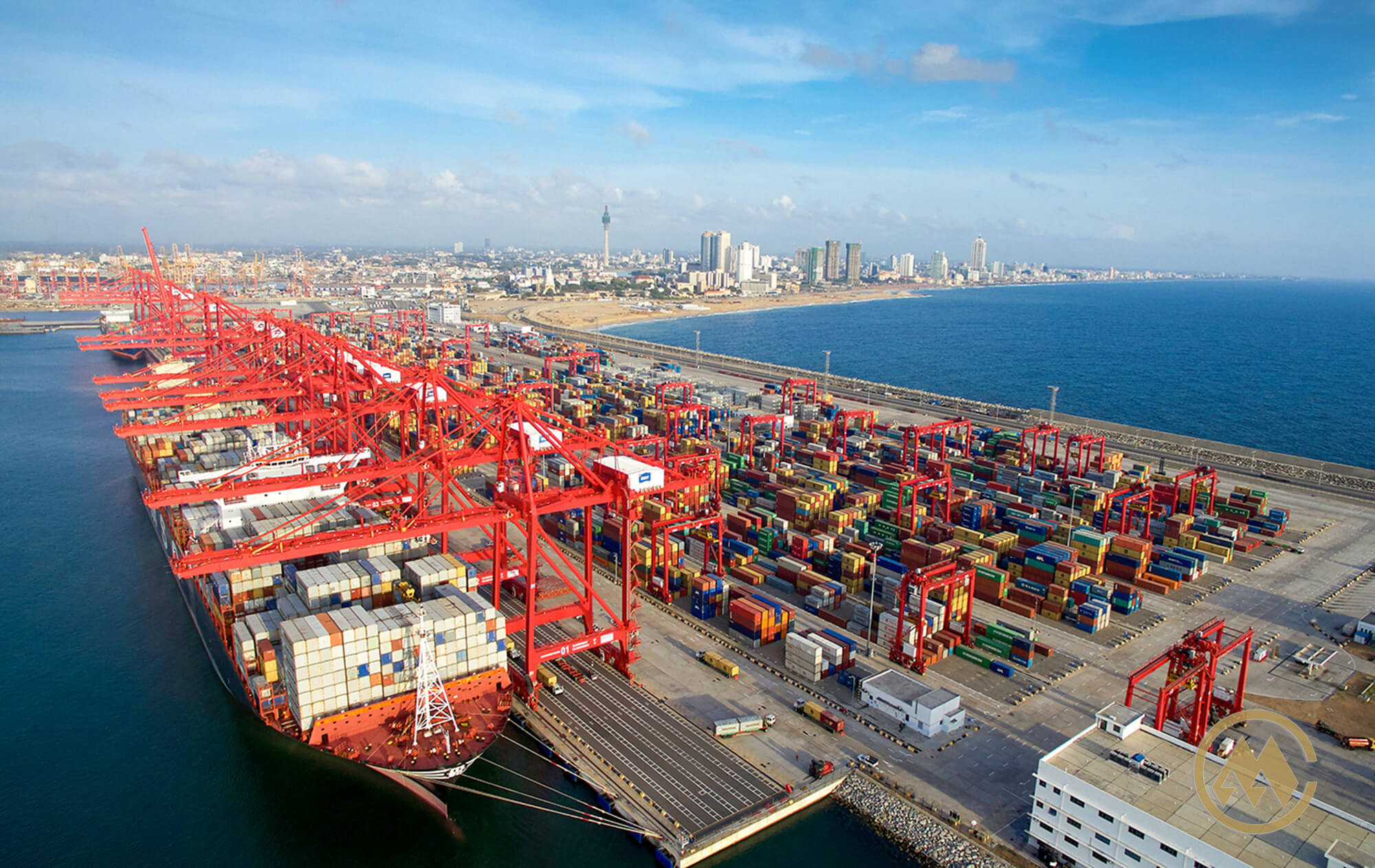
Chinese shipyards hold the lion’s share of container ship orders, with at least half of vessels under construction, followed by 34% for South Korean yards and just 8% for Japanese yards.
The figures, pulled from S&P Global Intelligence’ Sea-web data, also show how the Japanese shipbuilding industry is declining due to cheaper manpower costs in China.
The statistics show that there are currently 876 container ships of 6.88 million TEU on order globally. Of these, 514 vessels of 3.66 million TEU, amounting to 53% of the global total, are being constructed in China. In South Korea, 266 container ships of 2.33 million TEU are being built. Japanese shipyards are building 85 boxships of 581,248 TEU.
The Chinese shipyards leading in the boxship orders are Yangzijiang Shipbuilding (holding orders of 94 ships), Shanghai Waigaoqiao Shipbuilding (34 ships), New Times Shipbuilding (31 ships), Jiangnan Shipyard (21 ships), and Hudong-Zhonghua Shipbuilding (16 ships).
S&P’s data showed that between 2009 and 2020, as the container freight market tanked following the global financial crisis in 2008, boxship newbuildings declined, totalling less than 2 million TEU in October 2020, a 17-year low.
However, the situation was reversed when container freight began rebounding in Q3 2020, due to Covid-19-related logistical bottlenecks, and the momentum has continued, albeit with some corrections.
As liner operators made high profits during the market boom, they gravitated towards vessel owning to manage rising charter costs. The data showed that over 50% of the newbuilding orders are from liner operators and the rest are from tonnage providers. MSC has the highest number of vessels under construction, with over 1.5 million TEU on order.
In 2021, container vessel newbuilding orders exceeded 4 million TEU and the current orderbook for container ships now surpasses that for bulk carriers and tankers, a historical first. This means that the current boxship orderbook is more than trebled from the low levels seen in October 2020.
In terms of vessel size, ships in the 12,000 to 17,000 TEU range are the most in demand, accounting for nearly 50% of all boxships on order.
Source: Container News


 The profits of various companies especially in sectors such as engineering, auto components, pharma and medical devices have been affected because of the increase in sea freight costs accompanied by shortages of containers. The cost of air shipment from China to the USA has also increased from 50-200%, making matters worse.
The profits of various companies especially in sectors such as engineering, auto components, pharma and medical devices have been affected because of the increase in sea freight costs accompanied by shortages of containers. The cost of air shipment from China to the USA has also increased from 50-200%, making matters worse.
